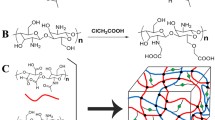Abstract
Purpose
Hyaluronate carboxymethylcellulose-based bioresorbable membrane (HC membrane; Seprafilm®) is used to prevent postoperative adhesion. We conducted this study to assess the effectiveness of the HC membrane in reducing the severity of adhesions in patients undergoing unplanned re-laparotomy.
Methods
Between February, 2002 and December, 2010, 123 patients underwent abdominal surgery followed by a re-laparotomy in Kumamoto Regional Medical Center. The HC membrane was placed under the first abdominal incision in 60 patients (HC membrane group), whereas it was not used in the other 63 patients (control group). We compared the medical and operative records of these two groups.
Results
At the second laparotomy, adhesion under the incision was severe in many of the control group patients, but was significantly reduced in the HC membrane group. Postoperative small-bowel obstruction was significantly less frequent in the HC membrane group. According to univariate analysis of the risk factors for adhesion, prolonged operation time, blood loss, and not using an HC membrane were significantly associated with severe adhesion. Multivariate analysis revealed that only not using the HC membrane was significant.
Conclusion
The HC membrane effectively reduces the severity of wound adhesion, making unplanned repeated laparotomy safer.

Similar content being viewed by others
References
Ellis H. The clinical significance of adhesions: focus on intestinal obstruction. Eur J Surg. 1997;577:5–9.
Jenkins S, Klamer T, Parteka J, Condon R. A comparison of prosthetic materials used to repair abdominal wall defects. Surgery. 1983;94:392–8.
Luijendijk R, de Lange D, Wauters C, Hop W, Duron J, Pailler J, et al. Foreign material in postoperative adhesions. Ann Surg. 1996;223:242–8.
Menzies D, Ellis H. Intestinal obstruction from adhesions: how big is the problem? Ann R Coll Surg Engl. 1990;72:60–3.
Vrijland W, Tseng L, Eijkman H, Hop W, Jakimowicz J, Leguit P, et al. Fewer intraperitoneal adhesions with use of hyaluronic acid-carboxymethylcellulose membrane: a randomized clinical trial. Ann Surg. 2002;235:193–9.
Wang Q, Hu ZQ, Wang WJ, Zhang J, Wang Y, Ruan CP. Laparoscopic management of recurrent adhesive small-bowel obstruction: long-term follow-up. Surg Today. 2009;39:493–9.
Kawamura H, Yokota R, Yokota K, Watarai H, Tsunoda Y, Yamagami H, et al. A sodium hyaluronate carboxymethylcellulose bioresorbable membrane prevents postoperative small-bowel adhesive obstruction after distal gastrectomy. Surg Today. 2010;40:223–7.
Ellis H, Moran B, Thompson J, Parker M, Wilson M, Menzies D, et al. Adhesion-related hospital readmissions after abdominal and pelvic surgery: a retrospective cohort study. Lancet. 1999;353:1476–80.
Raftery A. Regeneration of parietal and visceral peritoneum: an electron microscopical study. J Anat. 1973;115:379–92.
Beck D, Cohen Z, Fleshman J, Kaufman H, van Goor H, Wolff B. A prospective, randomized, multicenter, controlled study of the safety of Seprafilm adhesion barrier in abdominopelvic surgery of the intestine. Dis Colon Rectum. 2003;46:1310–9.
Fazio V, Cohen Z, Fleshman J, van Goor H, Bauer J, Wolff B, et al. Reduction in adhesive small-bowel obstruction by Seprafilm adhesion barrier after intestinal resection. Dis Colon Rectum. 2006;49:1–11.
Becker J, Dayton M, Fazio V, Beck D, Stryker S, Wexner S, et al. Prevention of postoperative abdominal adhesions by a sodium hyaluronate-based bioresorbable membrane: a prospective, randomized, double-blind multicenter study. J Am Coll Surg. 1996;183:297–306.
Beck D. The role of Seprafilm bioresorbable membrane in adhesion prevention. Eur J Surg Suppl. 1997;577:49–55.
Kusunoki M, Yanagi H, Shoji Y, Noda M, Ikeuchi H, Yamamura T. Reconstruction of the pelvic floor using absorbable mesh with a bioresorbable membrane (Seprafilm) after abdominoperineal rectal excision. J Surg Oncol. 1999;70:261–2.
Ong T. Prevention of intraabdominal adhesions in Kasai portoenterostomy. J Pediatr Surg. 2001;36:1613–4.
Salum M, Lam D, Wexner S, Pikarsky A, Baig M, Weiss E, et al. Does limited placement of bioresorbable membrane of modified sodium hyaluronate and carboxymethylcellulose (Seprafilm) have possible short-term beneficial impact? Dis Colon Rectum. 2001;44:706–12.
Oikonomakis I, Wexner S, Gervaz P, You S, Secic M, Giamundo P. Seprafilm: a retrospective preliminary evaluation of the impact on short-term oncologic outcome in colorectal cancer. Dis Colon Rectum. 2002;45:1376–80.
Inoue M, Uchida K, Miki C, Kusunoki M. Efficacy of Seprafilm for reducing reoperative risk in pediatric surgical patients undergoing abdominal surgery. J Pediatr Surg. 2005;40:1301–6.
Mohri Y, Uchida K, Araki T, Inoue Y, Tonouchi H, Miki C, et al. Hyaluronic acid-carboxycellulose membrane (Seprafilm) reduces early postoperative small bowel obstruction in gastrointestinal surgery. Am Surg. 2005;71:861–3.
Kusunoki M, Ikeuchi H, Yanagi H, Noda M, Tonouchi H, Mohri Y, et al. Bioresorbable hyaluronate-carboxymethylcellulose membrane (Seprafilm) in surgery for rectal carcinoma: a prospective randomized clinical trial. Surg Today. 2005;35:940–5.
Uchida K, Urata H, Mohri Y, Inoue M, Miki C, Kusunoki M. Seprafilm does not aggravate intraperitoneal septic conditions or evoke systemic inflammatory response. Seprafilm does not aggravate intraperitoneal septic conditions or evoke systemic inflammatory response. Surg Today. 2005;35:1054–9.
Zuhlke H, Lorenz E, Straub E, Savvas V. Pathophysiologie und Klassifikation von Adhasionen. Langenbecks Arch Chir Suppl II Verh Dtsch Ges Forsch Chir. 1990;345:1009–16.
INTERCEED(TC7) Adhesion Barrier Study Group. Prevention of postsurgical adhesions by INTERCEED(TC7), an absorbable adhesion barrier: a prospective randomized multicenter clinical study. Fertil Steril 1989; 51:933–938.
Bruggmann D, Tchartchian G, Wallwiener M, Munstedt K, Tinneberg H, Hackethal A. Intra-abdominal adhesions: definition, origin, significance in surgical practice, and treatment options. Dtsch Arztebl Int. 2010;107:769–75.
Conflict of interest
Daisuke Hashimoto and his co-authors have no conflict of interest.
Author information
Authors and Affiliations
Corresponding author
Rights and permissions
About this article
Cite this article
Hashimoto, D., Hirota, M., Yagi, Y. et al. Hyaluronate carboxymethylcellulose-based bioresorbable membrane (Seprafilm) reduces adhesion under the incision to make unplanned re-laparotomy safer. Surg Today 42, 863–867 (2012). https://doi.org/10.1007/s00595-012-0191-z
Received:
Accepted:
Published:
Issue Date:
DOI: https://doi.org/10.1007/s00595-012-0191-z




